If the meter still works you didn't break anything.
A lithium ion charger has both a constant voltage mode and a constant current mode. So it acts sometimes as a voltage supply and sometimes as a current supply. It decides which mode to use at a given time by monitoring the battery voltage, current, or, in some cases, the temperature (battery has a sensor built in, which the Samsung phone that caught fire apparently did not).
In either mode, connecting the ammeter in parallel with the operating charger+battery circuit will pull current from both the battery and the charger (depending on, as one poster said, its output current limit). So if you get a reading, it doesn't tell you anything specific about either the battery or the charger.
If you put the meter in series with the battery, as Chris M. said, you see how much charging current is being supplied to the battery, which may tell you about the state of the battery (low current means it's mostly charged and being sustained, high current means it's mostly discharged) but not really anything about the charger's maximum current.
